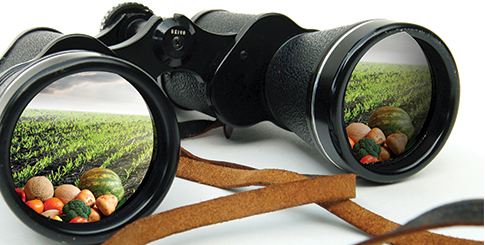Fruit, Vegetables & Innovation
While we tend to think of innovation as going forward to do what hasn’t been done before, sometimes it can mean taking a step back.
Get Personal, Tell Your Story
Goforth believes the industry must get better at storytelling. “I think more than ever before, people really want to know the story behind their food,” he insists. “It doesn’t have to be a new thing; it doesn’t have to be arecreation of a product we’ve been selling for 100 years, just a rediscovery of it.
Growing in the ’Hood’
Managed farm communities, affectionately called “agrihoods,” are making their mark. These self-sufficient communities, built around a working farm, combine the best of the past and the future. One such community is Serosun Farms in Kane County, Illinois.John DeWald, principal at Serosun, says the concept is similar to the golf course neighborhoods that sprang up in the 1990s. “But instead of golf courses, you get a farm.” As a model to preserve disappearing farmland, the community required an entirely new zoning category. DeWald’s sister, development partner Jane Stickland, lives in Serosun and manages the farm and an equestrian center. The development is building eco-friendly, sustainable luxury homes around the farm, allowing people to benefit from its field crops while going about their normal suburban lives.
In addition to Serosun, there are similar communities in Georgia, New York, California, Colorado, and Arizona. Most agrihoods are supported by a nonprofit foundation that promotes sustainable agriculture, DeWald says, and usually have a farmers’ market or hospitality center to help defray costs. He predicts the communities will become increasingly popular. “I believe traditional blah suburban subdivisions are not where millennials want to go, and not where people retiring want to go either.”
“Blueberries have been around for a long time, but now everyone understands the health benefits. Somehow, we did a good job telling people about blueberries. While I know there are many wonderful merits to technology and the way we communicate, including social media, I still think there has to be a conversation. At some level, people still want to talk to people,” he observes.
Dan’l Mackey Almy, president and CEO of DMA Solutions, Inc. in Dallas, TX supports the same trend. “More and more fresh produce companies are realizing how important it is to know the people buying their products beyond demographics,” she explains. “When consumers feel like a brand understands their individual needs, it builds trust and communication. People want to feel connected to the brands they choose to purchase.”
As Goforth describes, it’s not just stories on a blog, but stories told in person. “I’ve read some really good articles about what’s driving the surge in local farmers’ markets. When consumers hear the message directly from farmers, they feel connected, informed, and confident in their food choices. All of this leads to increased consumption and more sales.”
Of course, part of building trust and keeping things simple and clear may also lie in telling stories about brands as well as items. “Companies are starting to have more confidence in the importance of building their own brand identity with consumers as well as buyers to strengthen their bottom line,” says Mackey Almy.



